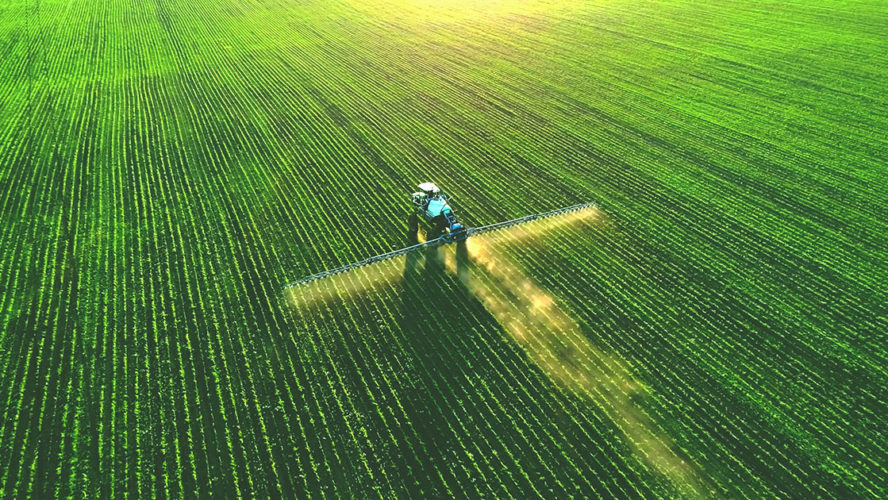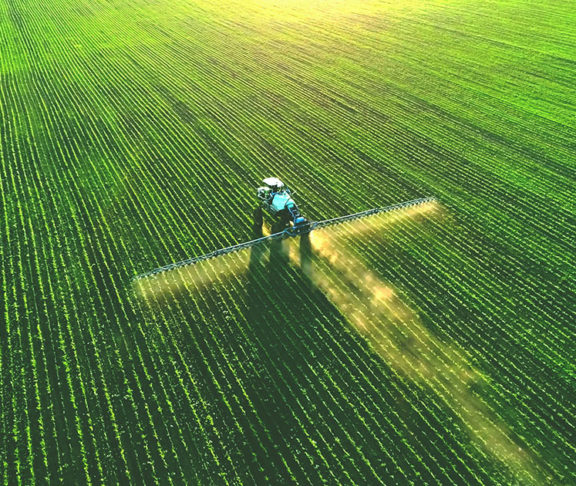According to the Global Agricultural Productivity Report, the world is facing setbacks in agricultural production. Extreme weather events, climate change, economic shifts, and some government policies have impacted crop health and yields across the globe, and with it, some of the tools that deliver that production most efficiently.
A thriving U.S. agricultural industry is at the core of building a healthy and resilient world. Abundant fruits, vegetables, and grains not only supply nutrition for humans and livestock, but they also ensure that crop health improves the soil, air, and water quality.
For example, according to the University of Missouri, a crop of healthy soybeans can naturally add 15 to 60 pounds of nitrogen back into one acre of soil, an essential nutrient for plant growth. All crops can remove carbon from the atmosphere and return it to the soil.
The protection and conservation of our nation’s water resources are a priority in agricultural production. The Iowa Department of Agriculture helps farmers plant crops in a manner that restores clean water through reducing soil erosion, controlling storm water runoff, and more. Through its Water Quality Protection Projects, the Iowa Department of Agriculture and Iowa farmers have improved water quality in watersheds above publicly owned lakes, trout streams, high use recreation areas, drinking water sources, urban developments, and aquifer recharge areas.
When disease, pests, or drought threaten crop health, however, the plants can’t produce the same yield, nor can they regenerate or “fix” the same amount of nutrients back into the soil for the next crop. As one of the world’s most agriculturally productive countries, America’s ability to keep its crops healthy is not only essential to feeding the world but preserving our natural resources and protecting our environment.
More mouths to feed
The U.S. Department of Agriculture (USDA) Foreign Agriculture Service cites that last year the United States exported $177 billion worth of agricultural products, feeding millions of people whose countries do not have the resources to grow all their own food. The United Nations reported that the 8 billionth person was born last month. How can we protect the health of our crops and find new solutions when the world is changing so quickly? We must increase U.S. investments in new agricultural research and intentionally support U.S. farmers, ensuring their access to newly developed tools based on the latest science.
For over 100 years, the commissioners, secretaries, and directors of agriculture have seen the results of marrying these two goals. Today, the U.S. farmer produces enough food to feed 166 people worldwide, compared to 25 in 1960 according to the USDA Farm Service Agency.
Innovations in agriculture
When we invest in research and provide new tools to farmers, we get stories like how the papaya was saved from extinction in Hawaii by the ringspot virus. The virus threatened to ruin the Hawaiian papaya industry until papayas resistant to the disease were developed by scientists through genetic engineering. Similar research on squash, tomatoes, potatoes, oranges, and other crops is being conducted to create crops resistance to more viral diseases otherwise difficult to control.
Furthermore, innovations such as drought-tolerant corn have been brought to the market thanks to agricultural research. Drought-tolerant corn improves the plant’s ability to absorb water and turn water into plant material. This technology has enabled farmers to conserve more water during years of normal precipitation and survive years of extended drought.
Precision agricultural techniques
Introducing precision agricultural techniques such as the use of GPS, soil sensors, and variable rate technology to administer crop inputs like water and fertilizer more precisely has also paid dividends in raising higher yielding and healthier crops across the United States. In fact, according to the Association of Equipment Manufacturers, the adoption of precision agricultural techniques has enabled U.S. farmers to avoid cultivating an estimated 10.2 million acres of cropland over the last 18 years. This is an area equivalent to 4.5 Yellowstone National Parks.
USDA Agricultural Research Service researcher Philip Owens also reported on the benefits of precision agriculture, sharing that, “tractor guidance systems can be profitable for small farms and improve efficiency gains by 20%. This technology can potentially improve environmental sustainability by reducing the over application of fertilizers, seed, and herbicide.”
Funding the future of food
According to the USDA Economic Research Service, public agricultural research and development has declined by about a third between 2002 and 2019, even though there is an average of $20 of benefits to the U.S. economy for every $1 of spending. New technologies from research and development are what help farmers improve their ability and efficiency in growing healthy crops.
Last year, the National Association of State Departments of Agriculture (NASDA) participated in the United Nations Food System Summit, where UN leaders agreed that significantly expanding investments in agriculture is critical to achieving the world’s sustainable development goals. Yet with other urgent global crises, a $100 trillion financing gap has grown since 2019. Robust support for agricultural research, including funding for extension programs and research infrastructure, is vital to ensuring U.S. agriculture remains competitive globally.
Farmers benefit from these advanced tools for crop health only when they can access the technology. This is why investments in research are equally as important as investing in frameworks to ensure new technologies are useable by farmers, such as internet infrastructure, technical assistance, and volunteer-based incentive programs. When farmers can use innovative tools like agricultural biotechnology, precision agriculture, and others, we can grow more food with less resources, all the while preserving the environment and maintaining food quality and safety standards.
State departments of agriculture see the results of empowering farmers with the latest tools and research each day. When we bring together our brightest minds, public and private resources, and community leaders to invest in equipping farmers with the best our country has to offer, we can ensure that agriculture leads the way toward a healthy and resilient world.

